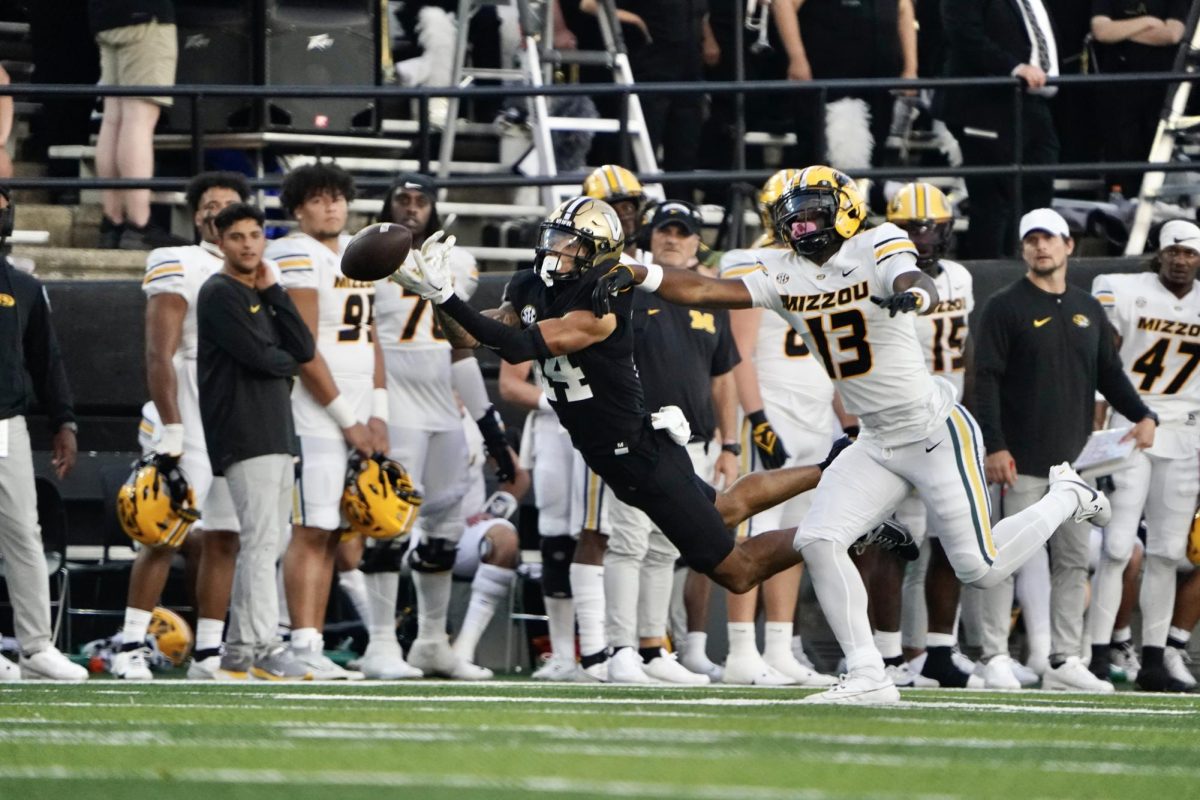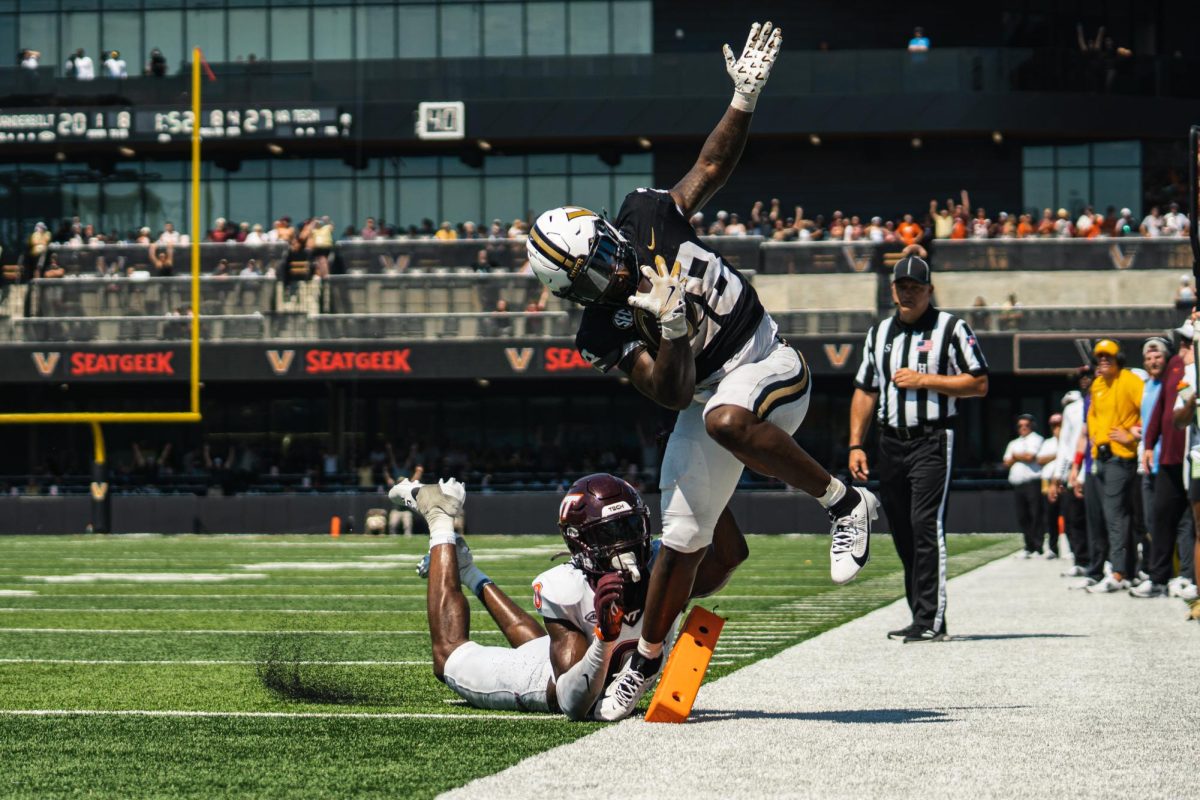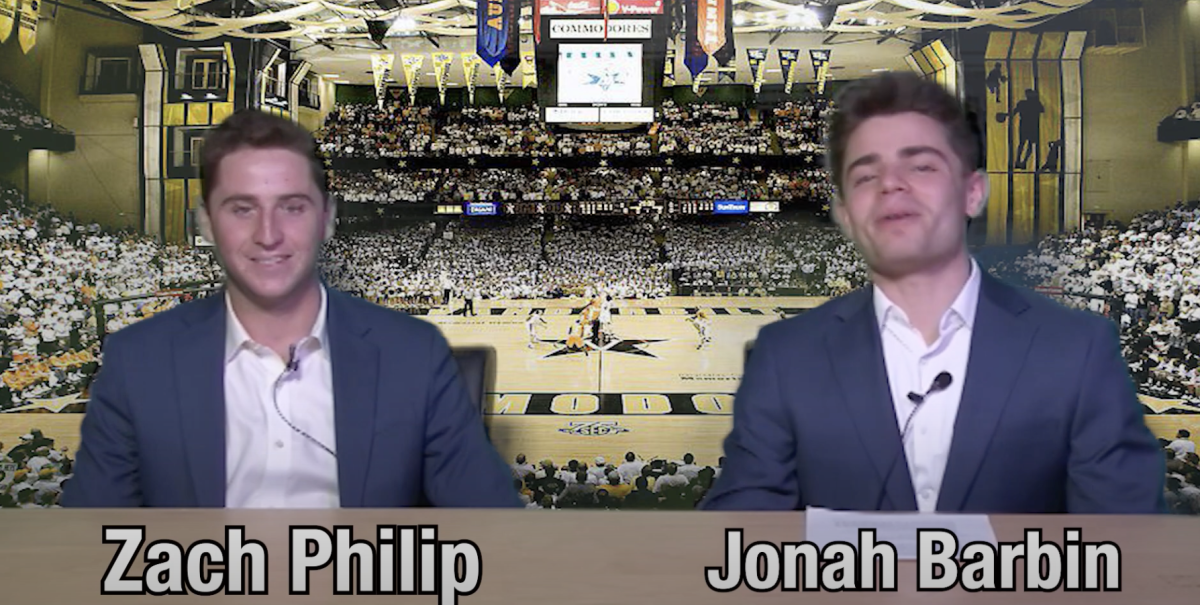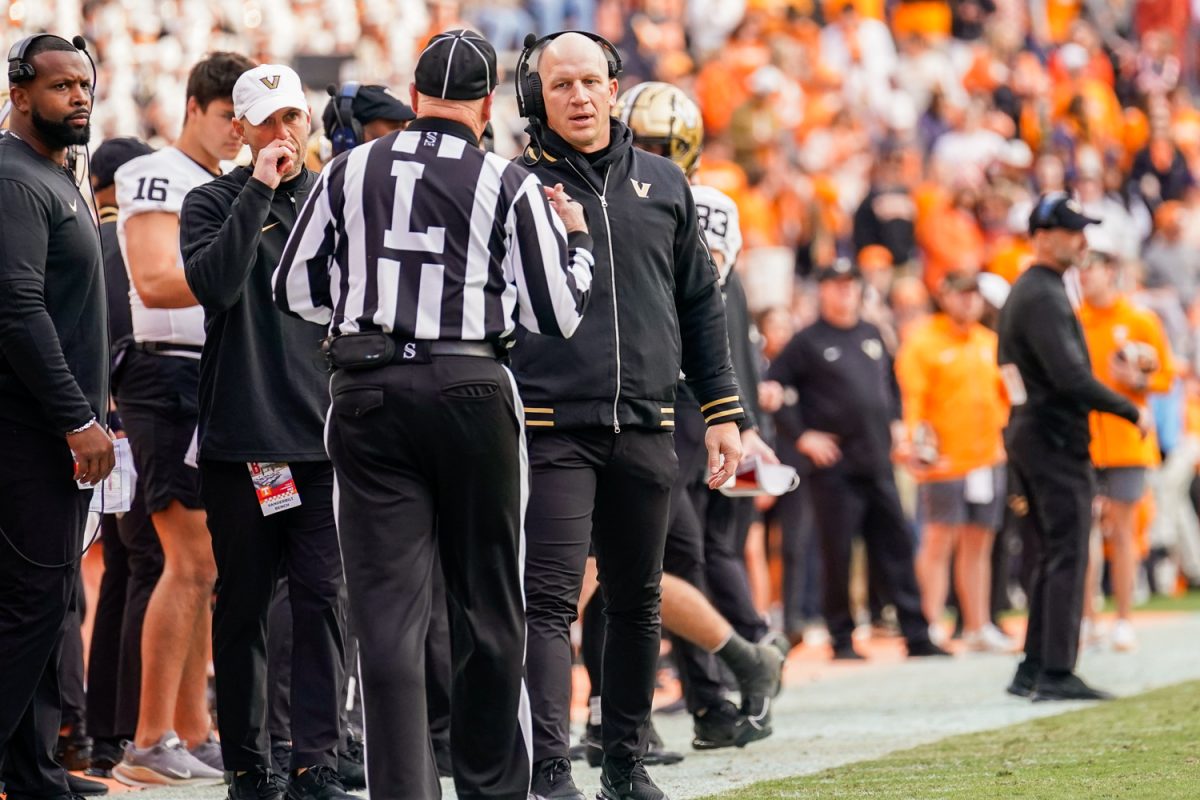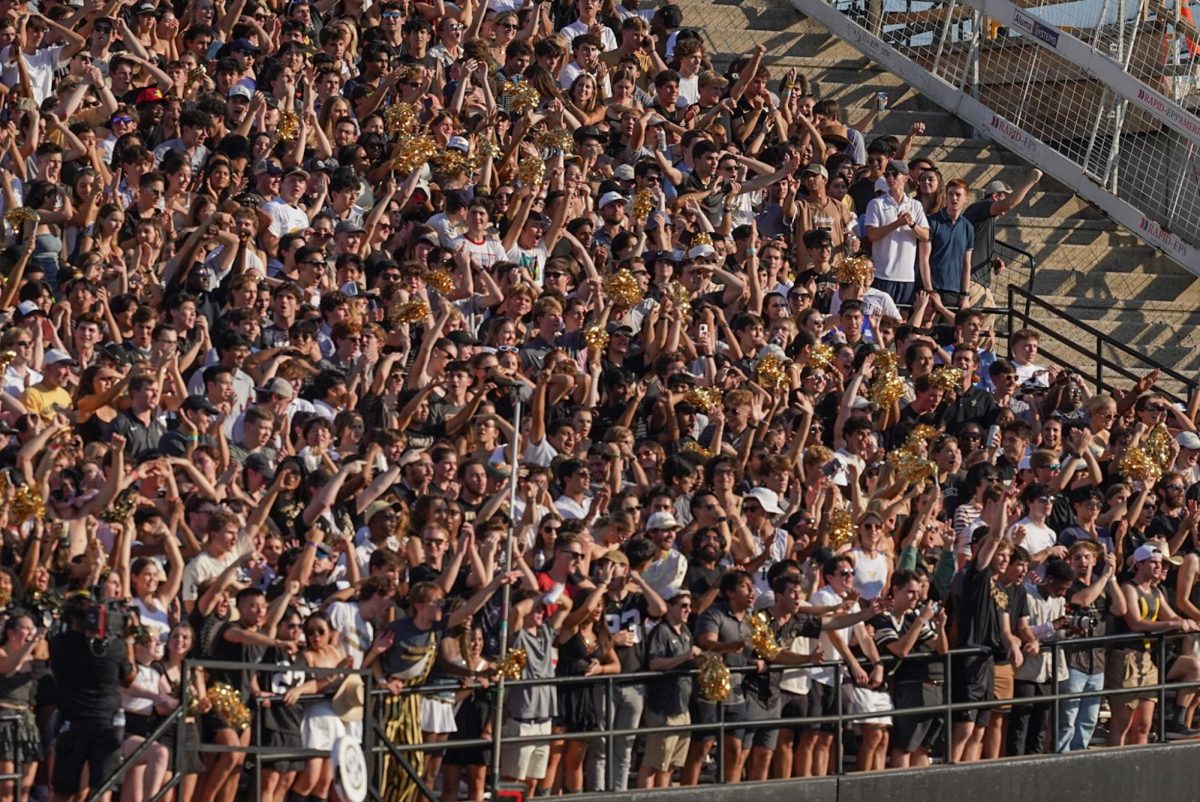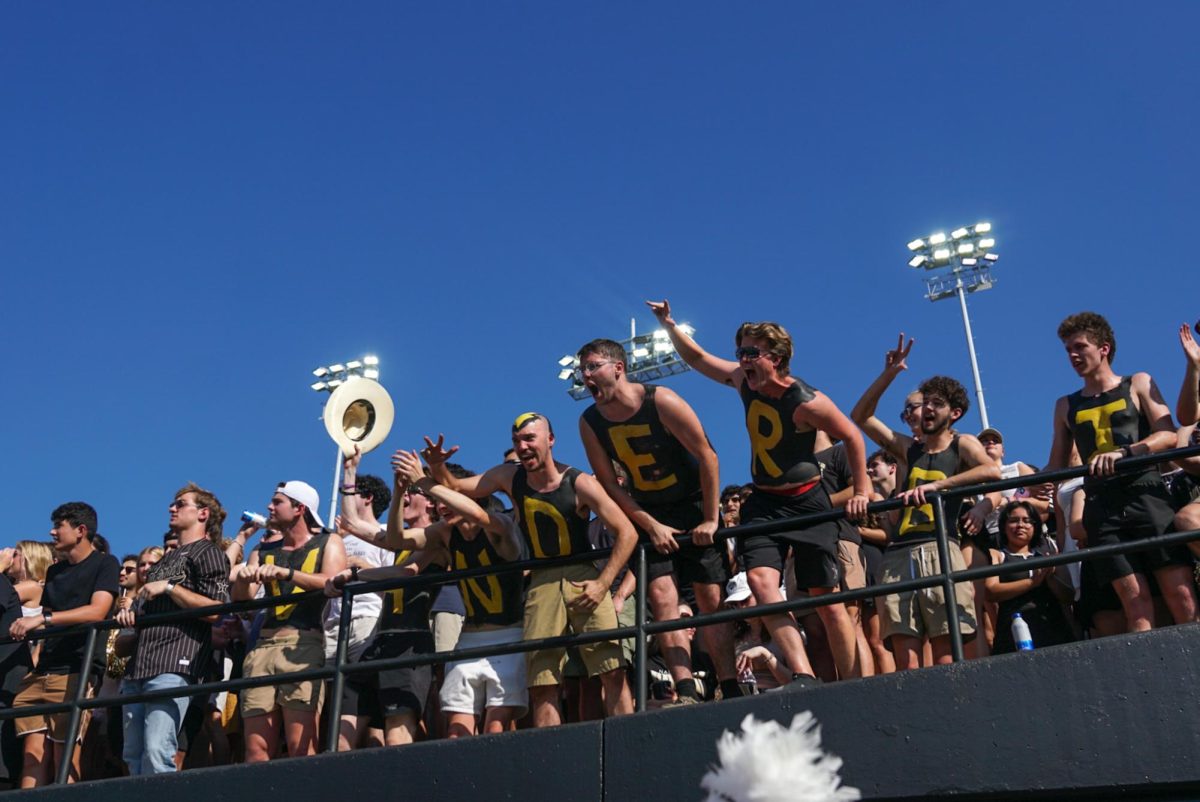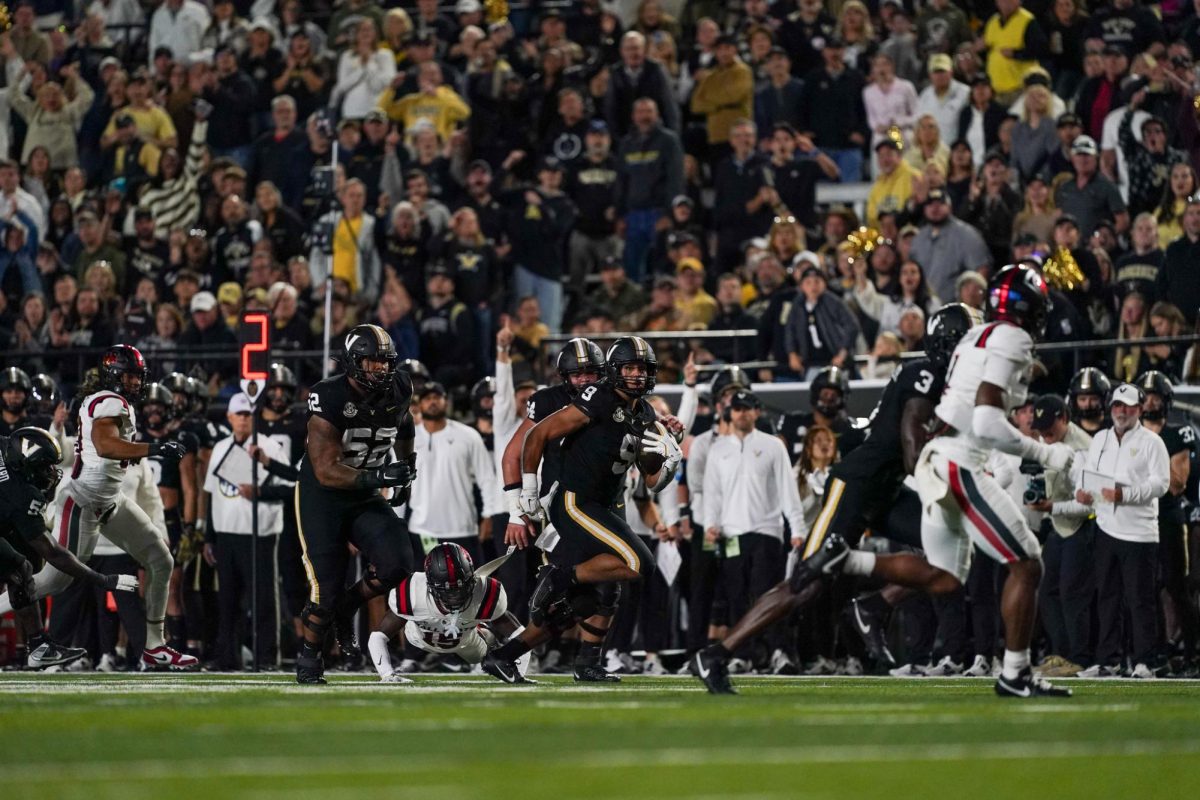On its way to a shambolic 2-4 record, Vanderbilt and its offense have underperformed in a variety of key areas. The offensive line is a clear weakness, the run game is among the worst in the country, and quarterbacks AJ Swann and Ken Seals have made some untimely mistakes. However, the blame for Vanderbilt’s offensive struggles should not fall solely on the players, as offensive coordinator Joey Lynch’s play calling has been just as much of an issue. In order to further understand the sheer predictability of the Commodores offense, let’s take a look at this sequence of four drives against Missouri in the second quarter, when Vanderbilt held a 7-3 lead.
Drive 1:
First-and-10: Sedrick Alexander run up the middle (3 yards)
Second-and-7: Screen pass to Junior Sherrill (0 yards)
Third-and-7: Dump-off pass to Patrick Smith (1 yard)
Drive 2:
First-and-10: Patrick Smith run up the middle (-3 yards)
*False Start
Second-and-13: Pass to Richie Hoskins (8 yards and a roughing the passer penalty)
First-and-10: Ken Seals run (0 yards)
Second-and-10: Patrick Smith run up the middle (1 yard)
*False Start
Third-and-14: Screen pass to Junior Sherrill (-2 yards)
Drive 3:
First-and-10: Sedrick Alexander run up the middle (4 yards)
Second-and-6: Short pass to Sedrick Alexander (4 yards)
Third-and-2: Ken Seals run (1 yard)
Drive 4:
First-and-10: Incomplete short pass to Junior Sherrill (0 yards)
Second-and-10: Patrick Smith run up the middle (-2 yards)
Third-and-12: Incomplete pass to Quincy Skinner
None of these plays really ever stood a chance:
The major pattern that Vanderbilt uses drive-after-drive is not only evident, but also a major concern. On first and second down, Lynch either called a run play up the middle or a poorly designed WR screen. A game plan as predictable as Vanderbilt’s will never work against SEC competition, especially with the talent deficit that Vanderbilt faces in the conference. These play calls aren’t just highly predictable; they play right into the offense’s biggest weaknesses. The offensive line is undersized and overmatched, so running backs and wide receivers are forced to face their first contact behind the line of scrimmage. This results in numerous third-and-long situations, which is never a good formula for success.
This is a complete contrast to the second half, when Vanderbilt found itself in a 24-7 hole. Take a look at this set of plays, which didn’t occur consecutively, but all had individual success:
Play 1 – Third-and-6: Vanderbilt sends a five receiver route and a quick throw results in an easy 3rd down conversion to Alexander.
Play 2 – Fourth-and-3: Vanderbilt once again sends a five receiver route, and a brilliant throw from Seals under pressure hits Alexander for a 21-yard gain.
Play 3 – First-and-10: A play fake gives Seals an extra half second to throw, and he finds Will Sheppard in a 1-on-1 matchup for a 29-yard gain.
Play 4 – First-and-10: A play fake draws the linebackers in, and Ken Seals finds Sheppard’s 1-on-1 matchup again for a 31-yard touchdown.
Play 5 – Second-and-7: Vanderbilt takes advantage of a bizarre Missouri pass rush set up and Seals finds Sheppard for a 27-yard gain.
Play 6 – First-and-10: A play fake and deep drop back give Seals time, and he hits Junior Sherrill over the top of the defense for a 45-yard touchdown.
This play-calling approach could not have been more different from the first half. Instead of playing conservatively, Lynch opened up the playbook and gave his best players chances to make plays. Seals is a very solid quarterback, and he showcased his accuracy and poise on these drives. Alexander is a great pass-catching back, and he made two big chunk plays. Sherrill is a dangerous deep threat, and he hit pay dirt on a long touchdown. Sheppard is a complete wide receiver, and he made three spectacular plays that resulted in 87 yards of offense and a touchdown. Additionally, by getting creative with play fakes and formations, Vanderbilt’s offensive line issues faded into the background as Seals had much more time to throw.
This leads to a very obvious question — why didn’t Lynch call those types of plays in the first half? Nothing about Vanderbilt’s season so far suggests that it will find consistent success on the ground anytime soon. Screen plays with a weak offensive line are always going to struggle. However, Vanderbilt’s offense has a clear strength, and that’s a plethora of playmaking wide receivers. They excel in creating separation down the field and making contested catches. This dimension will improve even further as star freshman London Humphreys gets healthy.
If Vanderbilt wants to compete against the best teams in the nation, they need to open up the offensive playbook before it falls into a 17-point deficit. Had Vanderbilt taken a more aggressive approach, choosing to feed the team’s best wide receivers earlier on, last week’s contest against Missouri could have ended up a lot closer.
As a heavy underdog against Florida in Gainesville this weekend, the Commodores have nothing to lose. At 2-4, bowl eligibility is unfortunately a long shot, so with no real expectations for a win, Lynch should have the passing game firing on all cylinders from the very start against the Gators on Saturday.

